Hermitage – the finest manifestation of Syrah and Marsanne
by Neil Allanby
Standing guard with a fabulous view looking south over the Rhône Valley is the magnificent hill of Hermitage, crowned by the famous chapel of St Christopher.
Geologically, the hill was part of the right bank Massif Central until the Rhône River burrowed its way to the west, ensuring Hermitage as the only granitic terroir on the Rhône’s left bank. The Romans won a decisive battle against the Gauls here in 121 BC and to celebrate, built a temple to Hercules. No doubt Hermitage’s steep slopes with the southerly aspect soon gained a reputation for grape growing and great wines. Invaders destroyed the temple and vineyards at the fall of the Roman Empire. The first chapel of St Christopher was constructed on the hill in the Middle Ages.
Returning home exhausted from the Crusades in 1224, the knight Henri Gaspart de Sterimberg was allowed to retire and live out a life of peaceful contemplation as a hermit on Hermitage hill. He cleared and cultivated the land and replanted vines, and was soon joined by other hermits. The wines they produced became increasingly famous, attracting travelers making pilgrimages south. The legend of Hermitage was born.
The appellation of Hermitage was decreed in 1937, and covers 137 hectares. Production is about 75% red wine from Syrah (aka Shiraz) and 25% white wine mainly from Marsanne but sometimes with added Roussanne. Both red and white wines are quite long living. Syrah’s heritage has been somewhat disputed but is now generally accepted as a cross between 2 ancient varieties originating in the northern Rhône. Marsanne also has its origins in the northern Rhone, and Hermitage is considered the finest manifestation of both Syrah and Marsanne.
Owning 34 hectares of vines in Hermitage, M. Chapoutier is the largest producer of Hermitage wines, and now a global company with vineyards throughout the Rhône, several other regions of France, Spain and Portugal. Since 1997, Chapoutier has owned vineyards in Heathcote and the Pyrenees in Victoria, Australia. Coincidentally, Chapoutier own a large collection of Australian Aboriginal Art and have pieces displayed in their corporate meeting rooms.
During a recent visit to Tain l’Hermitage, I met up with Mathilde Chapoutier, the dynamic Commercial Director of M. Chapoutier and heir-apparent should her father, Michel Chapoutier, one day retire.
We begin talking about the philosophy of wine, and how many of the general public claim to have limited knowledge on wine. Yet this is not in fact true – wine is about bringing pleasure and having the confidence to know what we like to consume. Mathilde confides one of her father’s very poignant expressions, “You don’t have to be a gynecologist to know how to enjoy having sex”. What a fabulous expression – my thoughts exactly!
Mathilde was included in the French national shooting team prior to returning to Tain to be involved in the wine business. She did her business studies in Beijing. I ask her why Beijing – “Why not? Anyone can study business in English anywhere”. Clearly Mathilde loves a challenge and can certainly hit a target!
Michel Chapoutier bought the M. Chapoutier company from his grandfather in 1990 thereby avoiding its liquidation. He set about converting production to biodynamics and improving the quality of the wines, followed by a program of vineyard acquisition, a task continued by Mathilde. The company now has 300 employees (40% female) and 23 domains worldwide. Under Mathilde’s business leadership, M. Chapoutier now also own a hotel, wine bars and boutiques. Her mantra is to change wine tastings to become a total wine experience.
Concerning acquisition, recent vineyards have each been small, from 3 to 10 hectares. Says Mathilde, “There is no fixed plan. If we see the right site, we act. Generally we keep their current team in place – they know best their terroir as they have been working it well. We bring them into the Chapoutier philosophy.”
Mathilde takes me on a tour of Hermitage, followed by a tasting. We also arrange another tour the following day on electric bike, available for hire from the cellar door. There are two Hermitage wines I am particularly interested in – Sizeranne and Chante-Alouette.
Chapoutier Hermitage Monier de la Sizeranne is a red wine from several outstanding parcels in the Chapoutier Estate on the Hermitage hill. It is 100% Syrah and being from different parcels there is a variety of different soil types – granite, silt and alluvial deposits. It is named in honour of Maurice Monier de la Sizeranne who was born in Tain in 1857 and became blind at the age of 9. He went on to study music, became a music teacher and developed a new abbreviated way of writing braille. The Chapoutier family bought the vineyards of Sizeranne’s family several generations ago, and from 1995 have over-printed all their wine labels in his braille as a mark of respect. Aromas of blackcurrant, blackberry, raspberry, spicy pepper and a hint of smoke and liquorice – as the concentrated tannins mature this wine becomes beautiful round and elegant, rich, long and smooth. A true example of Hermitage.
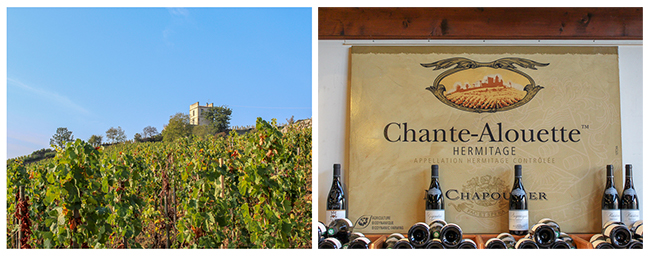
The Chante-Alouette vineyard (left) and advertising for Chante-Alouette in tasting room. © Neil Allanby
Chapoutier Hermitage Chante-Alouette is a white wine from their Chante-Alouette vineyard. It is 100% Marsanne grown on different soil types – clay-gravel, loess and decomposed granite and alluvial deposits. This outstanding wine needs time to mature and will age for 20 years. It is golden, dry, full flavored, and has a very long, slightly bitter finish – characteristic of Marsanne. Complex yet delicate aromas of quince, honey, ginger, mango, lychee, walnut, acacia and beeswax. This is quite a different wine to that which is generally found in Australia, however such a joy to drink. The perfect accompaniment to crab or crayfish pasta with a light curry sauce, and ideal on the local Hermitage dish of poulet-langoustine. The slight bitterness on the finish is very cleansing. This wine would also be a perfect match for a Tasmanian scallop pie.
Chapoutier philosophy is all about respecting terroir – the soil, climate and the workings of man. As we conclude our tour of this magical place, we pass the old cellars in the centre of Tain. Chapoutier has grown significantly and they recently moved into new production cellars on the outskirts of town. Mathilde lets me know, “These old cellars were constructed by my great, great grandfather. Now that we have moved to new premises, the local council has compulsorily acquired them and will demolish the buildings to make way for a new car park”. I agree that this is not very respectful of history and suggest that maybe Mathilde should consider running for mayor. She laughs, “Why not? Who knows what the future will bring”. No matter in which direction it travels, I get the distinct impression that the Chapoutier company is in very safe hands and has an exciting and successful future ahead of it.
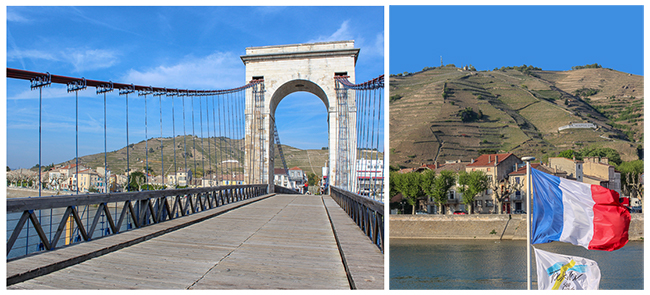
Tain l’Hermitage from thh foot bridge across the Rhône river (left) and view of Hermitage Hill from Tournon (right). © Neil Allanby
As I prepare to head out of Tain on the evening train, there is just enough time for one last stop – the Valrhona chocolate factory and museum, a four minute walk from the offices of M. Chapoutier.
My thanks to Mathilde and Tanguy at their cellar door. Cheers to a charmed life!

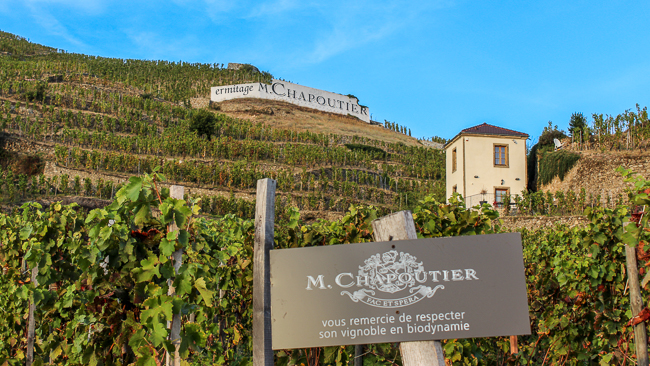
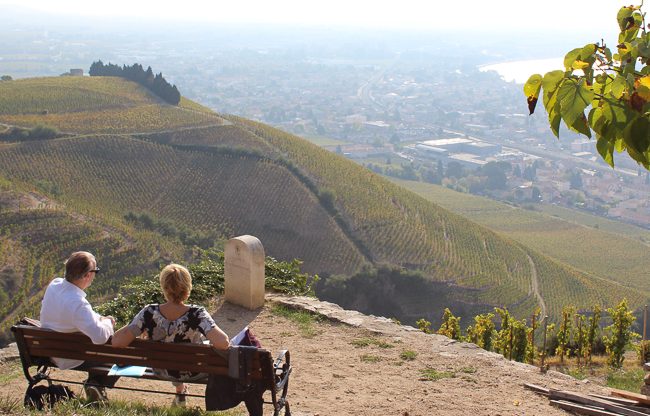
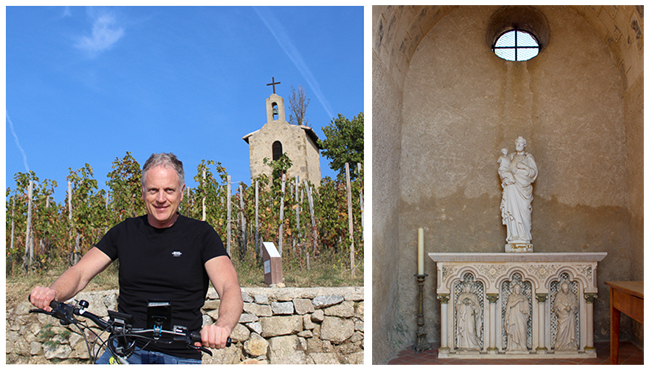
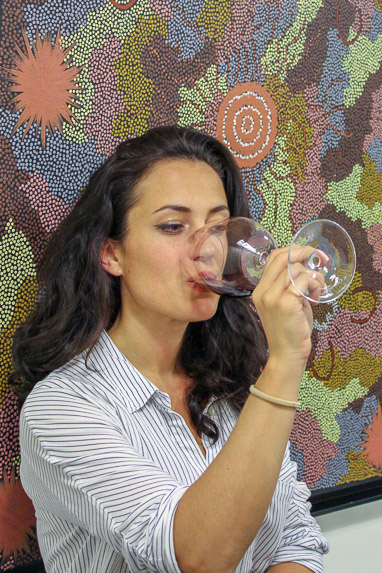
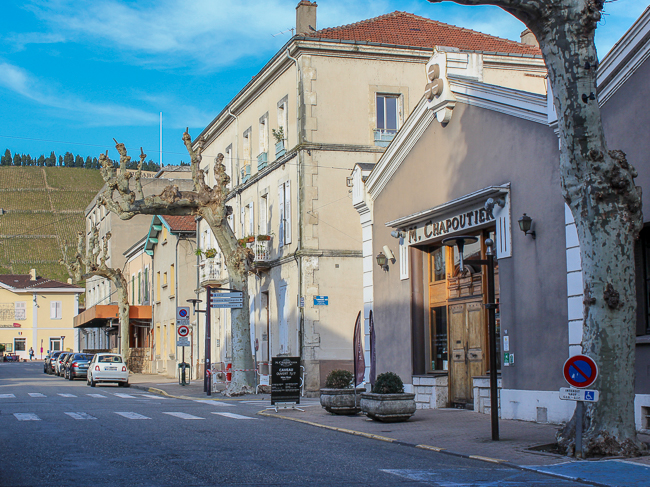
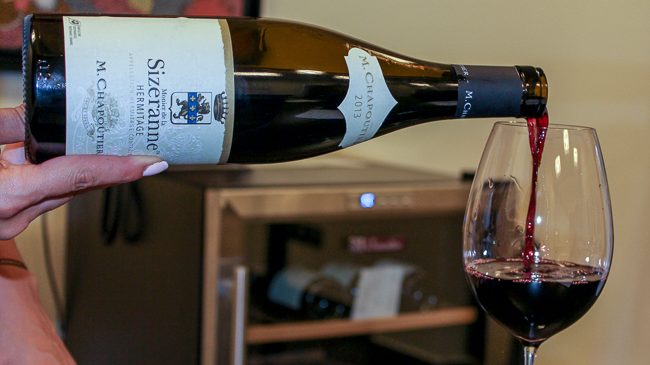
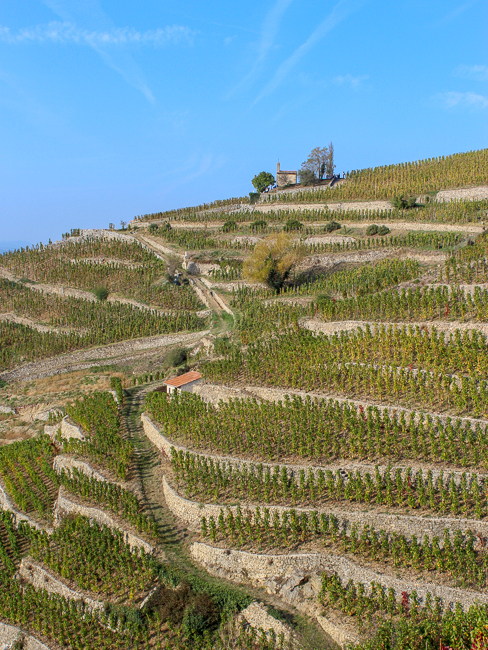
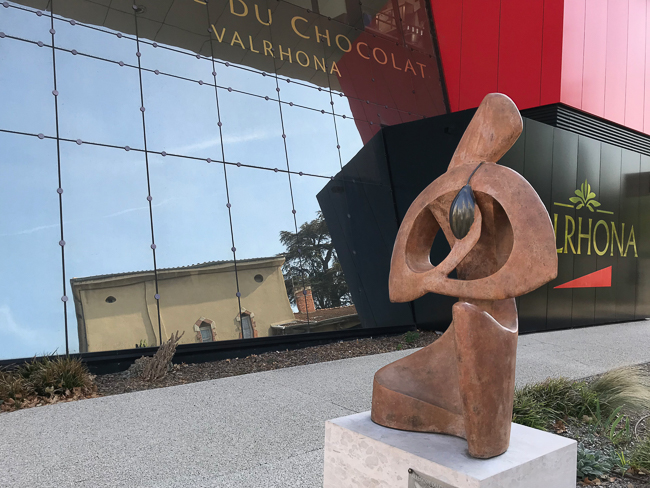
Nice article about a very good producer. I saw Neil took the bike to the Hermitage Chapel. About 10 years ago we took our front wheel drive car to the chapel, it is not recommended, a very rough and unpaved road.
Glad that the Valrhona chocolate factory is mentioned, can be highly recommended as their dark chocolate is one of the best.
Thanks Göran, glad you enjoyed the article. The road up to the chapel is much better nowadays, however the electric bike is far more exciting and great fun!
Hello Neil! Happy to read this story on Provence WineZine.
Chapoutier wines are endlessly delicious and interesting! Thanks for sharing this incredible tour and lovely photos.
Glad you enjoyed it Jill. When you are able to do so, you simply must visit Tain and the Chapoutier cellar door. and stay overnight at the Chapoutier hotel across the road!
Hi Neil, I have always been a big fan of Hermitage reds and whites but they are generally a little pricey for everyday. I understand M. Chapoutier has some vineyards in Australia. Have you tried those since you have returned to Australia? Are the Shiraz from Australia anything like their Hermitage?
Hi Eric, Yes, Chapoutier have held vineyards in Australia (Heathcote and the Pyrenees) since 1997. Their cellar door in Australia is in Heathcote, which is 90 minutes north of Melbourne. Great wines, great value too, made in a somewhat similar fashion, however expressing their local terroir. Definitely worth tasting to fully experience for yourself!
I love the wines from that region. I grew up there. I love the white wines from Saint Peray.
Sante,
Farouk